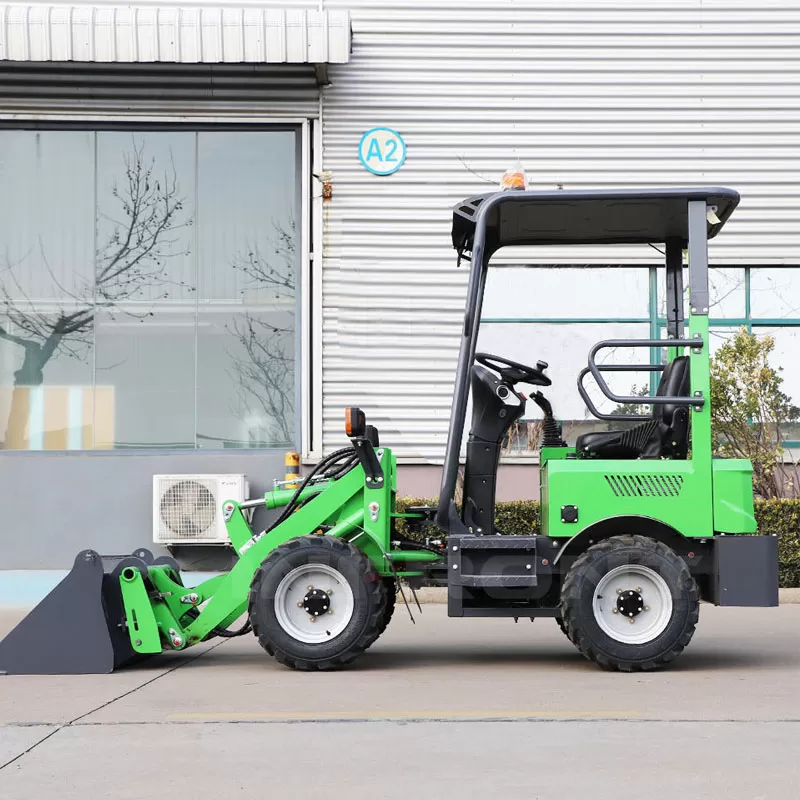
Anti-corrosion loaders effectively control corrosion risks in harsh environments by applying special protective coatings or using corrosion-resistant materials to their structural surfaces. Surface treatments may include water-based clearcoats, anti-oxidation layers, and marine-grade four-layer coating systems to slow the corrosion process and extend equipment lifespan and reliability. For example, in specialized environments such as port operations, offshore engineering, and chemical parks, the average service life of conventional loaders is shortened by 40%-60%. Breakthroughs in anti-corrosion technology enable equipment to maintain stable performance in extreme environments such as salt spray and acid rain.
Marine and Salt Spray Environments
In ports, docks, and offshore platforms, loaders are exposed to salty air, which can easily cause rust. Anti-corrosion coatings effectively protect against salt spray erosion.
Chemical and Fertilizer Loading
Loading acidic, alkaline, and highly corrosive chemical raw materials, such as in fertilizer and chemical silos, often leads to rapid oxidation and corrosion of metal surfaces.
Mining and Open-Pit Operations
In environments with high dust and fluctuating humidity, conventional loaders are susceptible to dust accumulation and damage if not adequately protected. The corrosion-resistant molded design improves durability and self-cleaning efficiency.
Long-Term Outdoor Storage
New loaders exposed to sunlight, rain, and dust during outdoor display or seasonal transportation are subject to damage. Removable or permanent film coatings can maintain their like-new condition.
|
Technology Type |
Features and Description |
|
Clear hard coat |
It adopts a varnish protective layer, which is water-based, transparent, chemical-resistant, non-yellowing and non-flaking, and is suitable for a variety of loaders, bulldozers and other equipment. |
|
Removable vs. Permanent Coatings |
EcoShield® VpCI®-386 (permanent coating) and VpCI®-391 (removable coating) offer different maintenance strategies for long-term protection or temporary shipping use. |
|
Marine-grade multi-layer coating system |
It uses zinc primer, two layers of mid-coat and topcoat to form a physical isolation layer, suitable for offshore or strong salt spray environment. |
|
Factory whole machine packaging coating |
The entire machine is spray-coated at the factory to form a sealed protection that can resist oxidation, fading, and can withstand high-pressure cleaning. |
Triple Protection Architecture
Surface Protection: Nano-ceramic coating (50-80μm thickness) forms an inert barrier through high-temperature curing, with a salt spray test resistance of 2000 hours without red rust.
Structural Protection: The oil system utilizes 316L stainless steel piping, and the electrical interfaces are IP67-rated sealed.
Intelligent Protection: Corrosion sensors monitor pH levels in key areas in real time, and data is integrated with the maintenance system.
Material Revolution
The cab utilizes fiberglass composite material (density 1.8g/cm³), which is 30% lighter than traditional steel and rust-resistant.
The bucket blade is welded with a tungsten carbide alloy layer with a hardness of HRC65 or higher, providing both corrosion and wear resistance.
Cost Advantages
The initial investment increases by 15%-20%, but the overall operating and maintenance costs over 10 years are reduced by over 45% (including downtime losses).
Extending Equipment Life
The anti-corrosion coating effectively inhibits oxidation, providing long-term protection for loaders and delaying structural weathering and damage.
Efficiency
Continuous operation rate increased to 92% (compared to an average of 78% for conventional equipment).
Reducing maintenance costs and downtime
Eliminating component replacement or production stoppages due to rust, maintaining a more manageable maintenance budget and improving operational efficiency.
Improving residual value and image
Maintaining a bright surface appearance extends service life, helping to maintain residual value when reselling or leasing.
Adapting to Extreme Environments
Maintaining long-term stable operation and reducing wear and tear on loaders in harsh operating conditions such as marine, chemical, and mining areas.
Environmental
Water-based preservatives replace oil-based products, reducing VOC emissions by 89%.
Clean the equipment regularly to remove salt and chemical residues to prevent long-term corrosion accumulation.
Repair damaged coatings promptly, applying corrosion converters or spot repainting for continued protection.
Choose the appropriate coating type based on the operating environment. For example, marine-grade multi-layer coatings are used in seaports, while removable coatings can be used for short-term transportation.
Removable coatings are recommended for temporary protection during decommissioning or long-term storage, as the dye is easily cleaned.
Corrosion-resistant loaders combine advanced coating technology with customized protection measures to significantly improve equipment durability and reliability in highly corrosive environments. Whether deployed in seaports, chemical parks, mines, or exhibition areas, these loaders offer lower maintenance costs, higher productivity, and superior long-term asset performance. We welcome adjustments and refinements based on actual column needs!